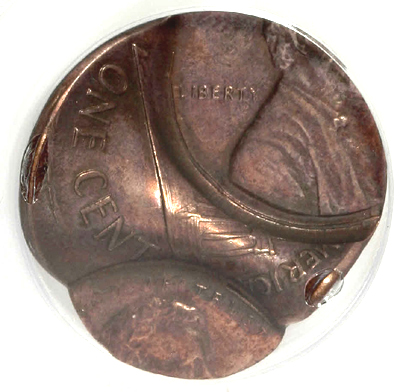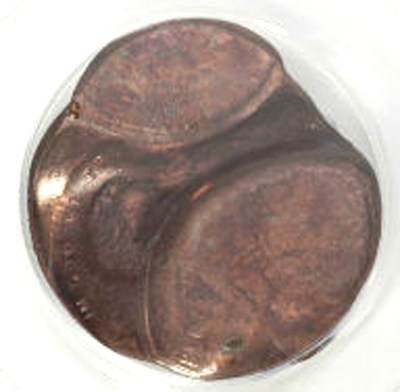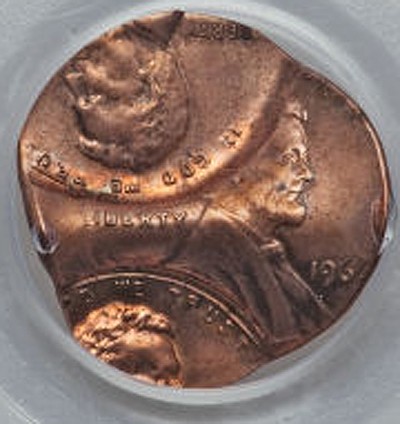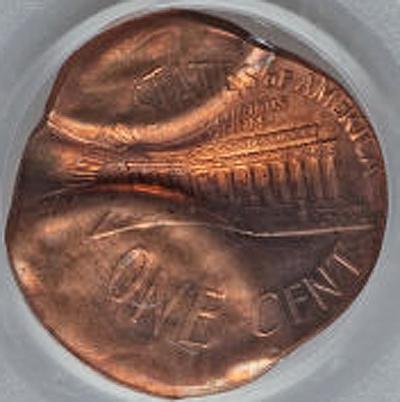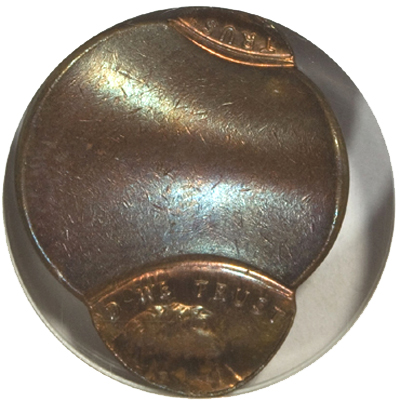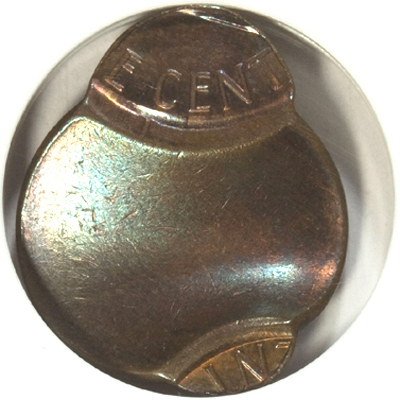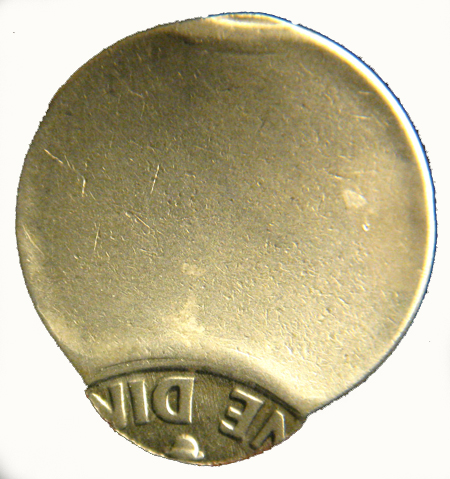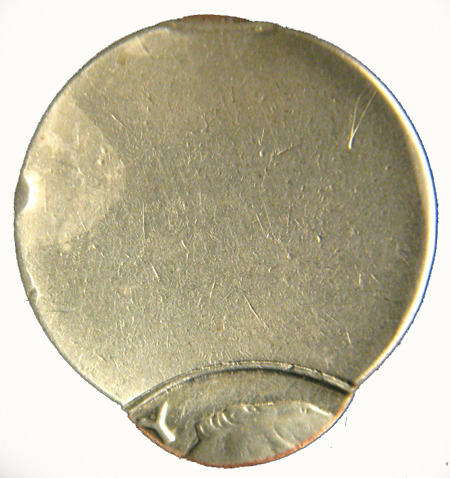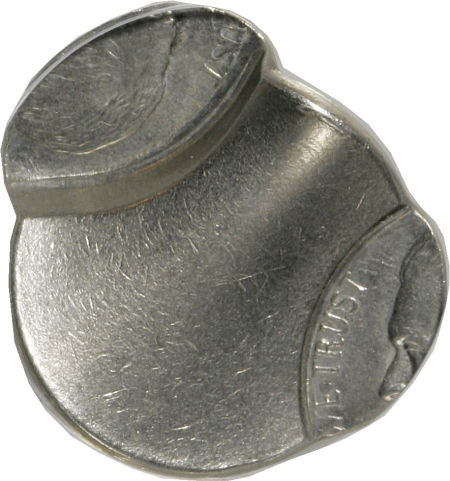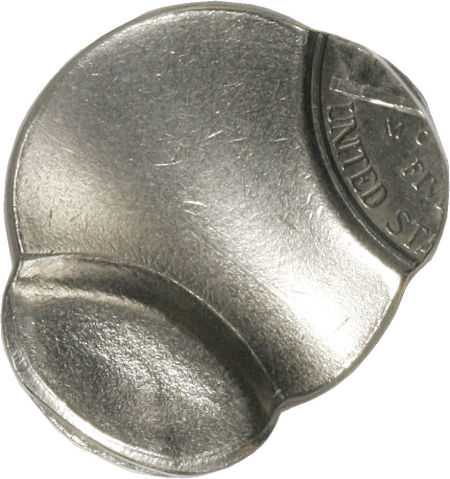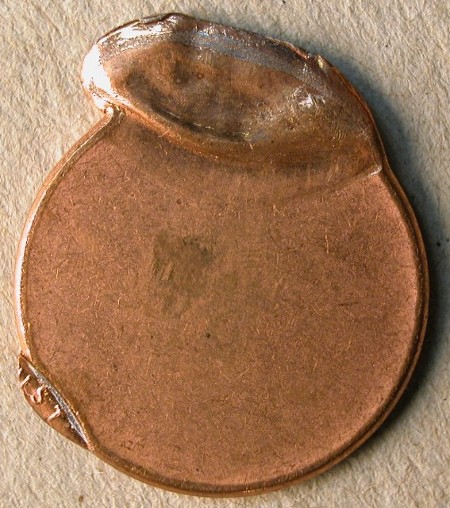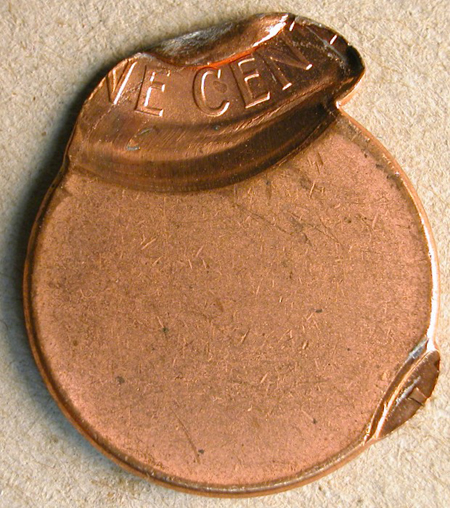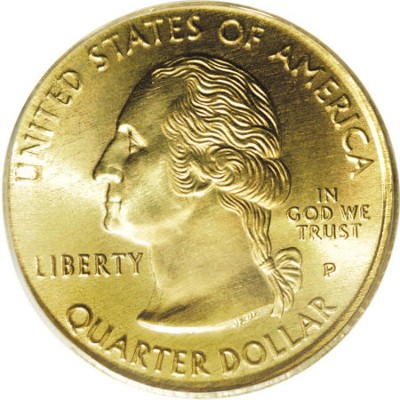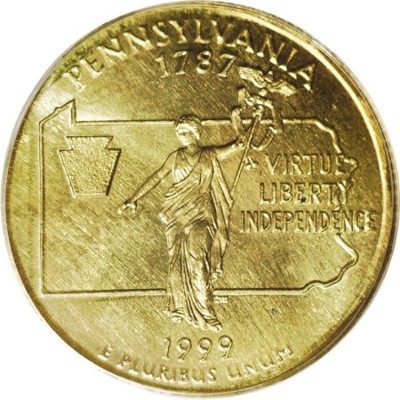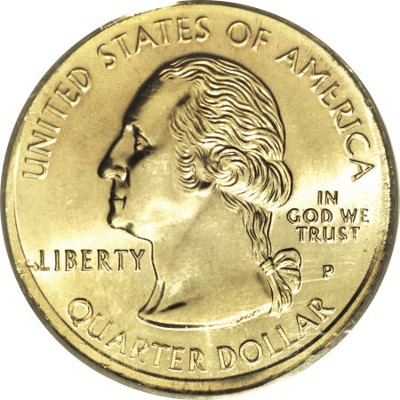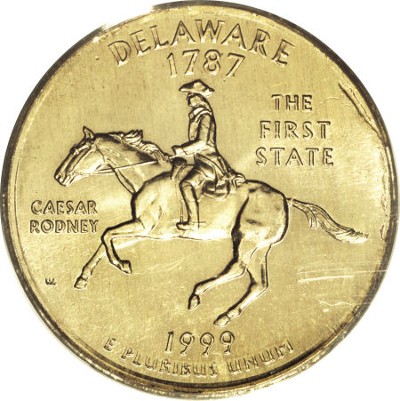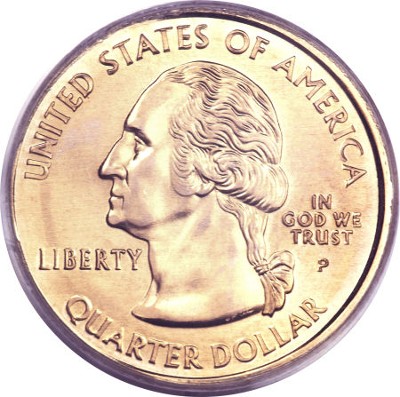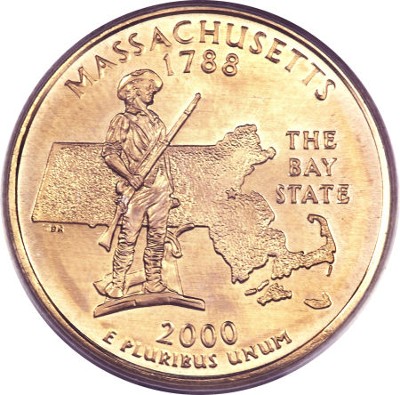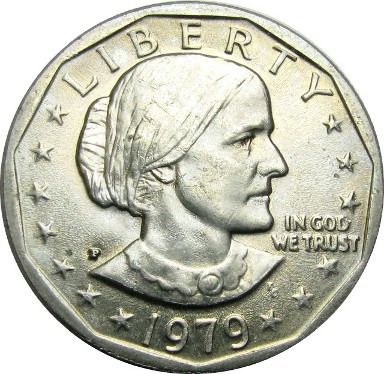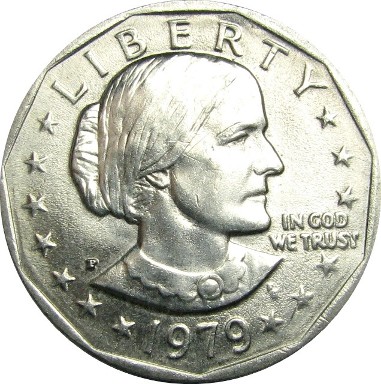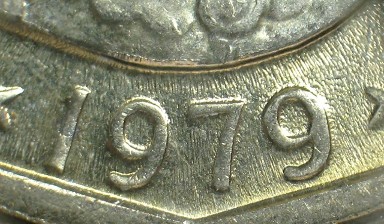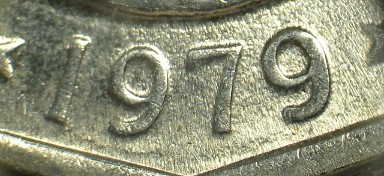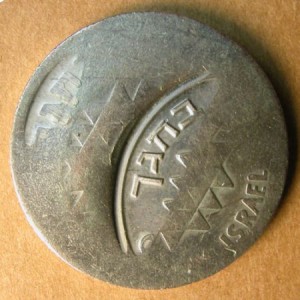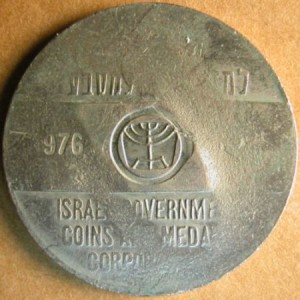Part VI. Striking Errors:
Struck-Through Errors:
Surface Film Effects
Definition: A thin film of oil on a planchet, a coin, or a die can produce a number of eye-catching effects.
The simplest effect is surface film doubling. It generally appears in coins that are broadstruck or struck off-center. Expansion of the coin is necessary for the phenomenon to develop. In surface film doubling a corona surrounds centralized design elements like busts and buildings. Surface film doubling can also extend radially from more peripheral design elements. Surface film doubling is especially common in nickels struck in the year 1964. Surface film doubling generally takes the form of a highly reflective area that appears dark when viewed face-on.
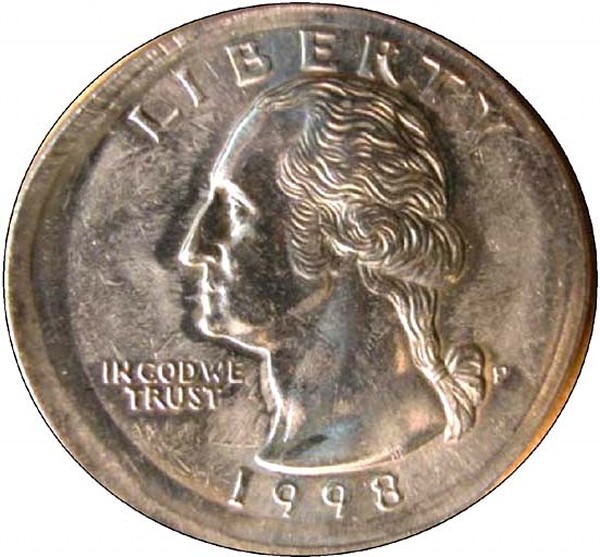
This broadstruck 1998-P quarter shows surface film doubling surrounding Washington’s bust.
Double-struck coins will occasionally show a surface film afterimage. When an oily coin shifts position and is struck again, the topography of the original image can be largely or completely erased.
However, a thin layer of oil can preserve many of the details of the first strike in the form of a ghost image. Surface film afterimages vary in their clarity, completeness, and color. A surface film afterimage can be darker or lighter than the surrounding field. It can take the form of a dark outline surrounding what used to be raised design elements. It can manifest as an area of enhanced reflectivity that appears dark when viewed directly from above.
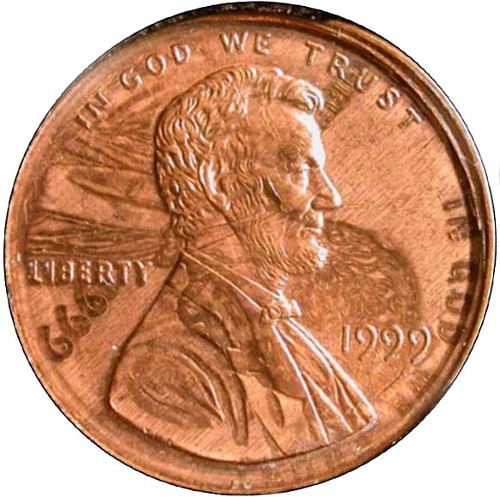
Scenario 1: An oily planchet is struck, shifts position, and is struck again. The second strike transfers an oily imprint of the design to one or both dies. The double-struck coin is ejected and a fresh planchet is fed into the striking chamber. The die with the transferred oily image then transfers that image to the planchet.
Scenario 2: An oily die strikes a coin, transferring the oil to the coin. The coin then shifts position and is struck again. This transfers the oil back to the die in the form of a faint image. The double-struck coin is then ejected and a fresh planchet is fed in. The next strike transfers the oily image back to the planchet.
Surface film transfer can leave an image that is darker or lighter than the surrounding field or one that has greater reflectivity.
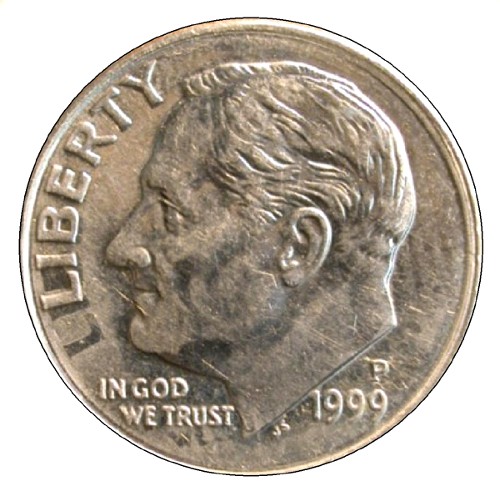
This 1999-P dime shows a case of surface film transfer on the obverse face. The transferred elements include the LIB of LIBERTY and WE TRUST.
Surface film effects can enhance the clarity and completeness of faint clash marks. This is most often seen among copper-plated zinc cents. However, the effects of an oil film are rather hard to distinguish from the faint clash marks themselves.
